ISO to USB: How to Burn ISO to USB in Windows 10
Burning the Windows 10 ISO file to a USB is a necessary step when installing Windows from a USB or creating a bootable USB drive. However, this is just one part of the process. After burning the ISO, you'll need to download the Windows USB/DVD download tool to complete the procedure. Fortunately, there's an alternative way to create a Windows 10 bootable disk that's more effective than burning ISO to a USB. You can use one of two methods to achieve your goal.
PAGE CONTENT:
Easier Way: Create a Windows 10 Bootable USB Drive
You can create a bootable USB drive for Windows 10 using the Qiling Backup software, which allows you to make Windows 10 portable in just three steps, eliminating the need to download and burn an ISO file.
USB requirements:
1. To determine how much disk space is used for the system C drive, we can check its capacity, which is 40GB. Next, we need to prepare a qualified USB drive with a capacity larger than 40GB to ensure it can hold the data from the system C drive.
2. Use an empty new USB drive to avoid any data loss. Make sure to transfer all important data to a safe location before cloning the system onto the USB drive. The cloning process will completely overwrite any existing data on the drive.
3. Correctly connect the USB drive to your machine and make sure that Windows has detected it and assigned a drive letter to it.
To create a portable Windows USB drive and boot from it, follow these steps:
Step 1. Launch Qiling Backup. Click "System Clone" in the "Tools and utilites" page.
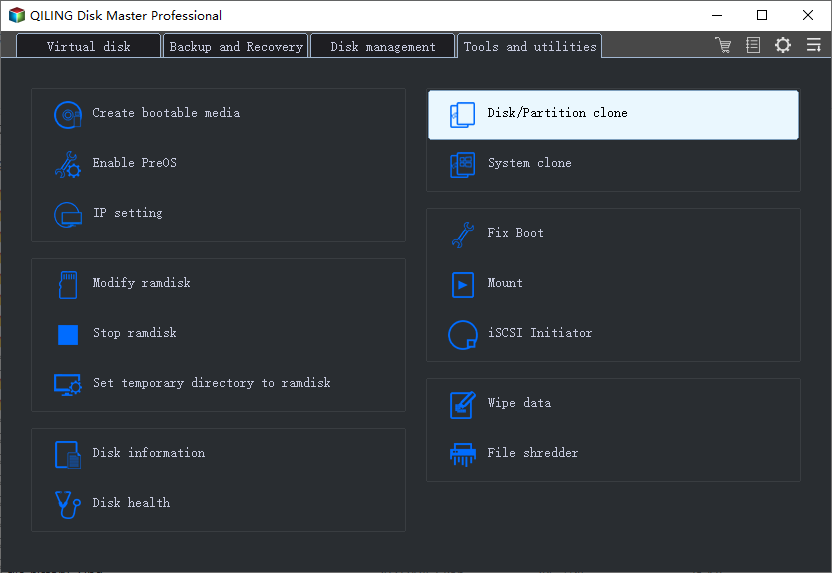
Step 2. On the "System clone" window, the software will choose the system partition and boot partition by default.
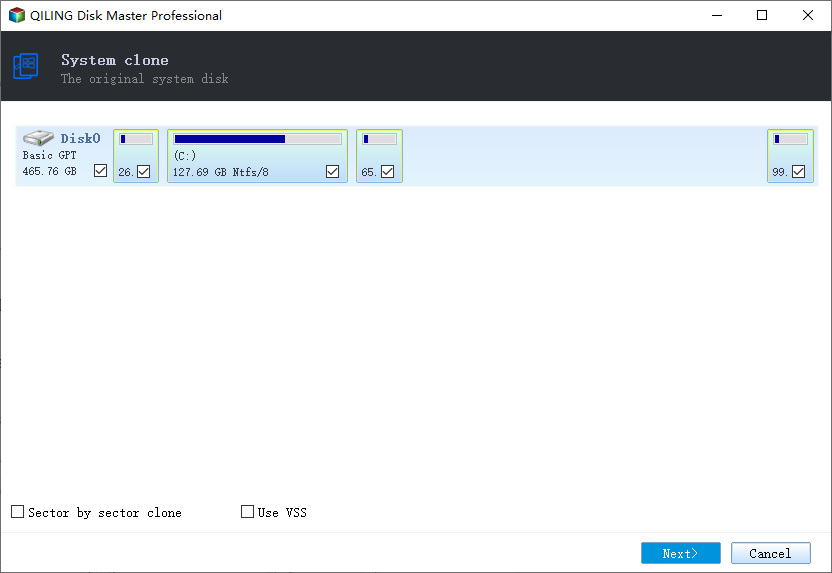
Just Choose the USB drive as the destination disk.
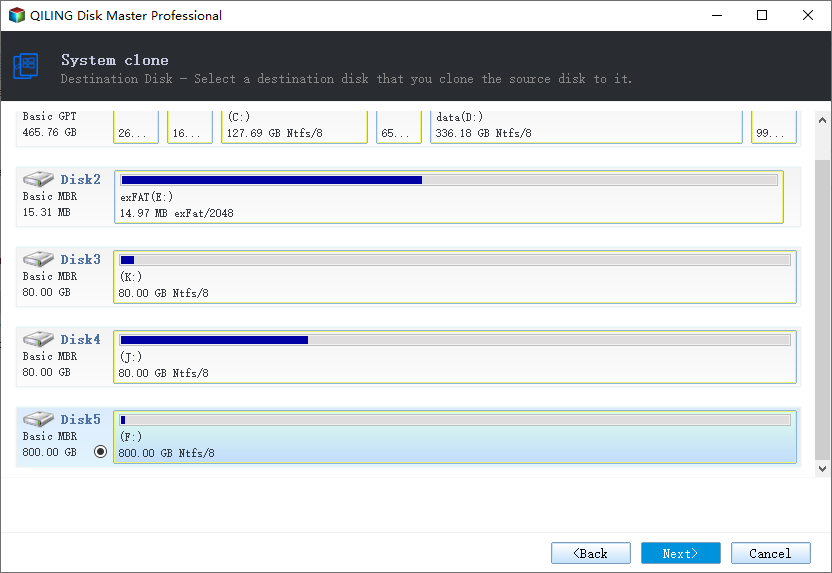
The software will start cloning the default partitions of your desktop/laptop to the USB drive, and once the process is complete, the USB drive can be safely removed.
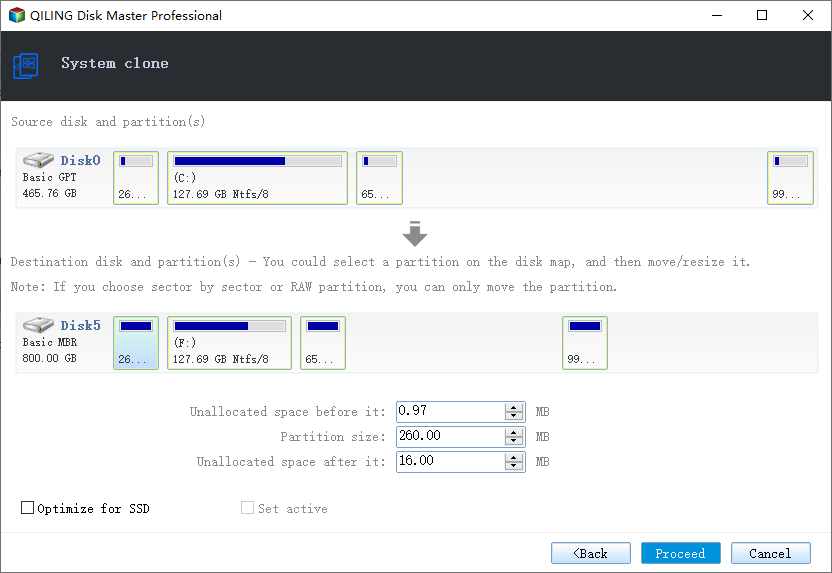
Step 3. Boot from the USB drive.
- Connect your portable USB to the computer
- Restart the computer and press "Del" to enter BIOS
- To boot from a portable USB, change the PC's boot order in the BIOS settings under the "Boot" tab to prioritize the USB drive over the hard drive. This allows the PC to load the operating system and other software from the USB drive instead of the internal hard drive.
- Save the changes and your system will boot up from the USB drive.
Qiling Backup allows you to create a bootable Windows 10 USB directly, unlike burning a downloaded Windows ISO file to a USB flash drive. Additionally, it provides a convenient way to install Windows 10 by migrating it from another computer without reinstallation, making it a more efficient option than burning ISO to the USB and then creating a Windows 10 installation disk.
To create an emergency USB, you can use a tool like Rufus to make a bootable USB drive that contains a lightweight operating system and rescue tools, allowing you to boot your computer from the USB and recover your data when your computer is unable to boot properly.
Qiling Backup is a must-have tool for protecting your important data, whether stored on your computer, external hard drive, USB flash drive, or other external storage devices. It's a reliable way to safeguard your files and keep them safe.
How to Burn ISO to USB in Windows 10
To burn an ISO file to a USB drive in Windows 10, you'll need a third-party tool like Rufus, as the built-in functionality isn't available. Depending on the source of the ISO file, the process may vary. If the ISO is downloaded on your computer, you can use Rufus to burn the ISO to a USB flash drive. First, download the latest version of Rufus from its official website, then launch it and connect your USB drive. Next, select the ISO file and the USB drive as the target, and Rufus will guide you through the burning process. This will allow you to create a bootable USB drive with the ISO file. (Note: If the ISO is on a Windows 10 installation DVD, you'll need to use a different approach, but that's not the focus of this response.)
Step 1. From the Device drop-down menu, choose the USB device you want to burn the ISO file to.
Step 2. To select a boot device, navigate to the Boot selection drop-down menu and choose the option "Disk or ISO image (Please select)". Then, click "SELECT" and choose the ISO file stored on your computer.
Step 3. To ensure you can boot from the USB on both UEFI and BIOS computer, choose "MBR" under Partition scheme,
Step 4. Leave the other options unchanged and click "Start" to begin burning the Windows 10 ISO file to the USB drive.
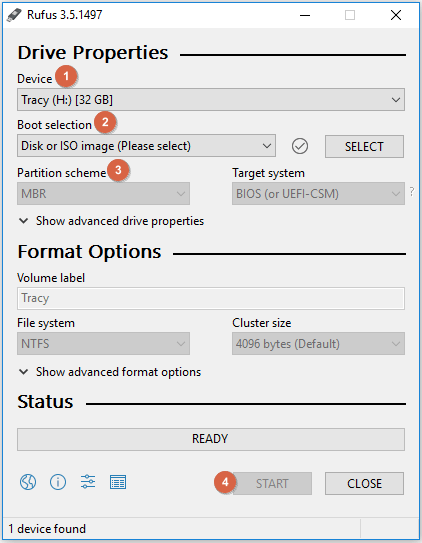
Before burning an ISO to a USB, it's a good idea to back up the USB drive using a backup utility, as the process will format the drive. If you do lose data after burning the ISO, you can recover your files using a free data recovery software like Deep Data Recovery.
Conclusion
To install Windows 10 from a USB drive or create a bootable USB for Windows 10, you can use Qiling Backup to simplify the process. It can help you with both tasks.
Other Topics You May Like
- Windows 10/8/7 System Restore Points Not Working
- Best Free Norton Ghost Alternative for Windows 10
- How to Copy OS from Laptop to USB Pen Drive
- [Solved] This Application Was Unable to Start Correctly (Error Code: 0xc000007b)
- Windows 10 Backup and Restore - Full Solutions to Protect System, Data and Applications
Related Articles
- Safe Disk Tutorials
Data or Drive Backup Tutorials - Simple Steps to Recover 0 Byte Files: A Complete Guide
Important files suddenly become 0 bytes? You can refer to this article and find out what caused such issue as well as how to solve recover 0 bytes files. - Error 0x80071AC3 on an External Hard Drive – Solved Now!
This page focuses on the error 0x80071AC3 on an external hard drive, analyzes possible causes for the error and provides quick fixes to it. - How to Backup Alienware Laptop on Windows 7/8/10?
Find the best way to backup Alienware laptop in Windows 10, 8, 7 in case of data loss due to hardware failure, system crashes, etc.